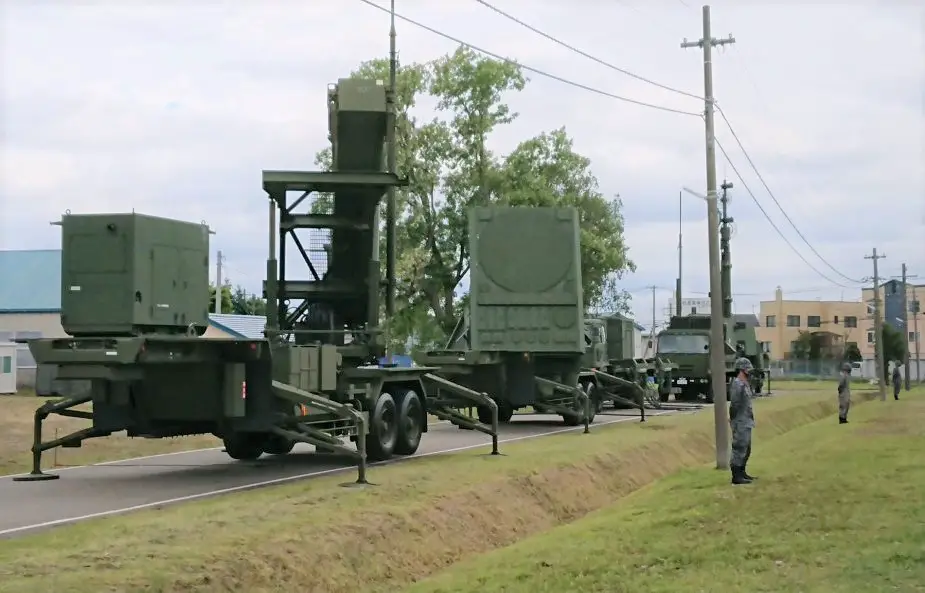Japan to boost missile defense againt North Korean threats
According to Bryan Betts of the MDAA (Missile Defense Advocacy Alliance), the cabinet of Japanese Prime Minister Fumio Kishida has approved a record defense budget of $47.2 billion (5.4 trillion yen) for fiscal year 2022, earmarking more than a billion dollars to buttress missile defense capabilities, in particular against threats from North Korea.
Follow Army Recognition on Google News at this link

Deployment of Patriot PAC-3 air defense systems on June 18, 2020 (Picture source: Twitter account of Japanese MoD)
The draft budget for the fiscal year starting in April is expected to pass the country’s bicameral legislature in the coming months, Bryan Betts writes. The government has framed the fiscal year 2022 defense budget, along with defense outlays in a supplemental budget for fiscal year 2021, as “defense strengthening acceleration” packages. Tokyo is now set to spend about $53.6 billion on defense over the next 16 months, reflecting the government’s intention to counter North Korea’s nuclear and missiles threats, as well as bolster the country’s self-defense forces to defend remote islands in the East China Sea in response to increased Chinese activity in the area.
Notably, Tokyo plans to spend a total of $1.2 billion (137.4 billion yen) to enhance the country’s ballistic missile defense capabilities, including some $521 million (60 billion yen) to purchase Raytheon's Patriot Advanced Capability 3 (PAC-3) Missile Segment Enhancement (Patriot PAC-3 MSE) interceptors and related support equipment.
Japan began developing the Ballistic Missile Defense(BMD) system in FY2004 to be fully prepared for the response against ballistic missile attacks. To date, Japan has steadily built up its own multi-tier defense system against ballistic missile attacks, by such means as installing ballistic missile defense capability to the Aegis-equipped destroyers and deploying the Patriot Advanced Capability-3 (PAC-3).
North Korea is assessed to have already successfully miniaturized nuclear weapons to fit ballistic missile warheads, and it possesses several hundred ballistic missiles capable of reaching Japan. Recently, North Korea is trying to improve its missile technology and attack capabilities, which include greater range of missiles, simultaneous launch of multiple missiles, precise aiming at targets, surprise attack, and new missiles that fly at low altitude to delay detection.
Recently, there are new threats, including hypersonic weapons designed to break the missile defense network. For example, some countries are adopting the Hypersonic Glide Vehicle (HGV). It is believed that the HGV is generally difficult to intercept by a missile defense system because after being launched by a ballistic missile, it flies at an ultra-high-speed and low altitude with high mobility.
At this very moment, the SDF (Sel Defense Force) is monitoring the area surrounding Japan by using radars, satellites, aircraft and ships. In order to promptly respond to ballistic missiles flying to Japan, an automatic warning and control system called Japan Aerospace Defense Ground Environment (JADGE) is gathering and processing information captured by radars across the country. The system automatically calculates the possible impact area and can instantaneously order Aegis destroyers on the remote ocean to intercept missiles.
In addition, the Japan Maritime Self-Defense Force secured $175 million (20.2 billion yen) to acquire an undisclosed number of SM-6 air-defense missiles for two of its destroyers, as well as $50.4 million (5.8 billion yen) to equip two ships with the Lockheed Martin AN/SPY-7 solid-state radars. Another $15.6 million (1.8 billion yen) will go to improve the Japan Aerospace Defense Ground Environment, one of the nation’s automatic air warning and defense control systems, using artificial intelligence technology.
If a ballistic missile is launched to Japan, the Aegis destroyers of the MSDF and the PAC-3s of the ASDF will intercept the missile. While the Aegis destroyers intercept ballistic missiles flying outside the earth’s atmosphere (at the mid-course stage), the PAC-3s intercept them at the terminal stage after their re-entry into the atmosphere.


























